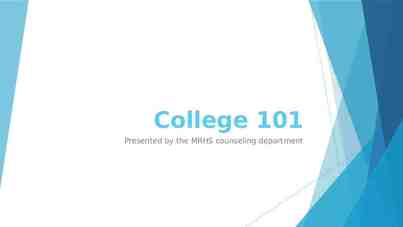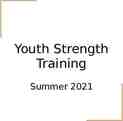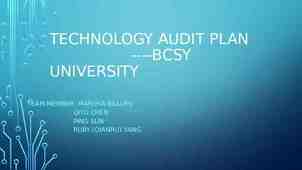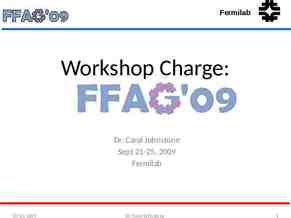Study Team Strategies Fortune Cookie Give OneGet One I Have Who Has
40 Slides279.05 KB

Study Team Strategies Fortune Cookie Give OneGet One I Have Who Has I Spy Jigsaw 2 Listening Post Math Chat Pairs Check Participation Quiz Reciprocal Teaching* Red Light, Green Light SPARC Station Rotation Swap Meet Think (Ink) Pair Share Whip-Around Exit Slip-Ticket out of class* Carousel Dyad Fishbowl Hot Potato* Hot Seat Huddle Index Card Carousel Jigsaw 1 Numbered Heads Silent Debate Teammate Consult* Possible Mathematical Practices Big Team Problems (1, 4, 5, 7, 8) Team Building (3, 8) Closures Team Roles w/color dots (3, 8) Review Team Roles Starters (6, 7) (3)

Carousel 1:1 Write a different problem/topic/question on large poster sheets hung on the walls or on each table. Each team is given a different colored marker. Each team goes to a different poster, discusses the topic and decides what to write. Teams rotate to all of the posters, adding to what was written by previous teams (have a time limit). When done, each team does a “gallery walk.” A large group discussion/debrief can then be held. Possible Mathematical Practices Big Team Problems (1, 4, 5, 7, 8) Closures (3, 8)

Dyad Each person is given equal time to talk. The listener does not talk, it isn’t a conversation. Confidentiality is maintained. Maintain eye contact and good body language. Possible Mathematical Practices Closures (3, 8) Starters (3) Team Building (3, 8)

Fortune Cookie Choose 5-6 questions and put in an envelope. Each team receives an envelope. One person draws a question, and makes one statement about the topic, then passes it on. The next person adds their own statement or responds to the previous statement. When everyone has responded to the first statement, another person draws from the envelope and repeats the process. Possible Mathematical Practices Big Team Problems (1, 4, 5, 7, 8) Closures (3, 8) Starters (3)

Give One-Get One Record three ideas to share related to a certain topic. Circulate and share ideas; for every idea given they receive one in return and record these on a piece of paper – including the name of the author. Begin group sharing by inviting a volunteer to share one idea received citing the author. The named person then continues the sharing process. Possible Mathematical Practices Review (6, 7)

Hot Potato Every team has one sheet of paper and each student has a different colored pencil. A problem is given to the group. Person 1 writes the first step of the solution process, explaining aloud, and passes the paper on to Person 2. Person 2 makes any corrections and adds the next step, explaining aloud, and passes the paper on. Process continues until the problem is competed. Possible Mathematical Practices Big Team Problems (1, 4, 5, 7, 8) Review (6, 7)

Hot Seat One chair/desk per team is set up in the front of the room. Using Numbered Heads, Person #1 from each team comes to the front of the room and sits. Teacher gives everyone a problem to work on in a specified amount of time. Teams can talk, but not the individuals in front. Check individual and team answers; two points for correct individual answers and 1 point for correct team answers. Person #2 from each team is up next and repeat. Possible Mathematical Practices Starters (3) Review (6, 7) 1:1

Huddle One person from each team (teacher’s choice) is called to the front of the room. Teacher gives a piece of information, checks for understanding . Student goes back to team to share. Possible Mathematical Practices Big Team Problems (1, 4, 5, 7, 8) Team Building (3, 8)

I Have Who Has Each student has one card with problem and an answer to a different problem. Student 1 asks “Who has ” and states the problem. The person with the solution says “I have .” and states the answer. The responding student then poses his problem and the student with the answer on his card responds. The process continues until all the questions and responses have been given. Possible Mathematical Practices Team Building (3, 8)

Index Card Carousel Have the participants write one thing that they really need help with in their classroom - management, homework, getting kids to work, etc. The card gets passed around with the other participants offering suggestions on how to solve the problem. Possible Mathematical Practices Big Team Problems (1, 4, 5, 7, 8) Review (6, 7)

Jigsaw #1 1:1 Each study team is assigned a different part of a larger topic/task. The team researches and discusses the topic/task. The team determines how to organize and present the information. Each study team presents its part to the whole class. Possible Mathematical Practices Big Team Problems (1, 4, 5, 7, 8) Review (6, 7)

Jigsaw #2 1:1 Each study team member is assigned a different part of a task/topic. Each member researches/learns about the task/topic (possibly with others with same topic). Each member then presents the information to the others in his/her study team. Possible Mathematical Practices Big Team Problems (1, 4, 5, 7, 8) Review (6, 7)

Listening Post Students #1 and #2 work on a math problem aloud in their team. Student #3 listens to the discussion and can ask clarifying math questions. Student #4 only records what is discussed and verbalized (looks for attitudes) and may not talk. After 15 minutes, work stops and student #4 shares notes and observations. A variation is Students #1, #2, and #3 work and #4 observes and then shares. Possible Mathematical Practices Big Team Problems (1, 4, 5, 7, 8) Team Building (3, 8) 1:1

Math Chat (Chalk Talk) On poster paper, put the “center” topic of a concept map at the middle of each poster. Students are given markers. Without talking, students move from poster to poster adding to each concept map. Give a warning when to stop writing. Then allow students to revisit each poster. When it’s done, it’s done No discussion. Possible Mathematical Practices Big Team Problems (1, 4, 5, 7, 8)

Numbered Heads Students number off in study team. The team is given a problem to solve. When the team finishes, use random numbers (1-4) to ask questions or have team members share the solution process. The numbers can also be used to assign roles. Possible Mathematical Practices Team Building (3, 8)

Pairs Check Each pair has one paper and pencil. Student #1 writes what Student #2 explains OR Student #1 does the first problem while Student #2 only watches, listens and asks questions. Then roles are reversed for the second problem. Then each pair checks their work with the other study team pair. Continue on to the next pair of problems. Possible Mathematical Practices Closures (3, 8) Starters (3) Review (6, 7)

Participation Quiz Pick a group worthy task. Tell students which norm you are focusing on. – Show teams how you are keeping track (overhead, posters, chalkboard). Record comments while students are working. Debrief (Do not need to record everything). Possible Mathematical Practices Team Building (3, 8) 1:1

Reciprocal Teaching In pairs, Person A pretends that Person B was absent and explains a concept. Switch roles and continue. Possible Mathematical Practices Closures (3, 8) Starters (3) Review (6, 7)

Silent Debate Student pairs: One is “pro”, the other “con.” Each pair has one pencil and one sheet of paper. A topic is given, the pro goes first. The pro makes a supportive statement in writing. The con reads the statement and then writes a comment against the topic. The process repeats 3-4 times. Possible Mathematical Practices Closures (3, 8) Starters (3) 1:1

SPARC Start promptly. Peer support expected within each team. Assignments due each day. Respond to group rather than individuals. Circulate. Circulate. Circulate. Possible Mathematical Practices Team Building (3, 8)

Station Rotation Have 1-2 more stations than the number of student groups. Place a sheet of review problems (4-6) at each station. (Good idea to use a sheet protector). Have a blank answer sheet at each station for each group. The students work the problems as a group when they finish they turn in the station paper to the teacher and move to the next available station. Possible Mathematical Practices Review (6, 7)

Swapmeet When a group task is partially finished, one pair from each team rotates to the next team. Pairs from the two teams share ideas, solutions, thinking Pairs return to their original teams and share what they learned. Possible Mathematical Practices Big Team Problems (1, 4, 5, 7, 8) 1:1

Think-(Ink)-Pair-Share Teacher poses a question/problem. Without pencils, students think for 1-2 minutes. Students may then use pencil to begin working without talking to partner. Students then share their thinking and answer(s) with their partner. Pairs then may share with larger group. Possible Mathematical Practices Big Team Problems (1, 4, 5, 7, 8) Closures (3, 8) Starters (3) 1:1

Teammates Consult All pencils and calculators are set aside. Students read the problem or question. Give students individual think/work time. The problem is discussed by the team for clarity. Possible strategies are shared. Teacher gives okay for pencils to be picked up and written work to begin. Possible Mathematical Practices Big Team Problems (1, 4, 5, 7, 8) Closures (3, 8) Starters (3)

Whip-Around Topic or question is presented. Participants randomly have an opportunity to say something briefly about it. Everyone does not have to comment but are encouraged to do so. Possible Mathematical Practices Closures (3, 8) Starters (3) 1:1

Team Roles Resource Manager: Get supplies for your team, and make sure your team cleans up. Call the teacher over for team questions. Facilitator: Help your team get started by having someone read the task. Keep the team together and make sure everyone understands your team’s answers before you move on. Recorder/Reporter: Be sure you understand and are able to describe the mathematical thinking of the team to the rest of the class. Share your team data with the class. The teacher may give you extra information to share with your team. Task Manager: Make sure no one talks outside your team. Make sure your team is on-task and talking about math. Listen for statements and reasons. Possible Mathematical Practices Big Team Problems (1, 4, 5, 7, 8)

Fishbowl Used to model to whole class expected behaviors/norms One or two teams sit in the middle of the class and works on the math problem Rest of class stands near the team and observes or takes notes of how the team works, questions that are asked . After 5-10 minutes, the teams return to their own tables and work on the math problem Possible Mathematical Practices Big Team Problems (1, 4, 5, 7, 8) Starters (3) Team

I Spy When the team is stuck, one student (the Resource Manager) can go around to another team and listen in Student reports back to the team what was learned Possible Mathematical Practices Big Team Problems (1, 4, 5, 7, 8) Team Building (3, 8) 1:1

Red Light, Green Light The team works together on a problem or set of problems. When they finish the problem, then they must Stop. The teacher verifies the work/answer with questions. The team is then given permission to Go to the next problem or set of problems. Possible Mathematical Practices Big Team Problems (1, 4, 5, 7, 8)

Team Roles Resource Manager: Get supplies for your team, and make sure your team cleans up. Call the teacher over for team questions. Make sure devices are stored appropriately Facilitator: Help your team get started by having someone read the task. Keep the team together and make sure everyone understands your team’s answers before you move on. Make sure all students using device appropriately Possible Mathematical Practices Big Team Problems (1, 4, 5, 7, 8) Recorder/Reporter: Be sure you understand and are able to describe the mathematical thinking of the team to the rest of the class. Share your team data with the class. The teacher may give you extra information to share with your team. Bring your device with you. Task Manager: Make sure no one talks outside your team. Make sure your team is on-task and talking about math. Listen for statements and reasons. Make sure all devices are closed when needed Team Building (3, 8)

Participation Quiz Pick a group worthy task. Tell students which norm you are focusing on. Show teams how you are keeping track (overhead, posters, chalkboard). Record comments while students are working. Debrief (Do not need to record everything). With a Device Open a spreadsheet with QuickOffice on your i-pad Each team is represented by a row in spreadsheet Make specific comments on how they are functioning as a team next to their team name in the How it Worked spreadsheet. Project the spreadsheet to the screen via Apple TV. Possible Mathematical Practices Team Building (3, 8)

Jigsaw/4-Corners Each study team member is assigned a different part of a task/topic. Each member researches/learns about the task/topic (possibly with others with same topic). Each member then presents the information to the others in his/her study team. With a Device 1 person from each team goes to a designated corner. Only bring your device Once in the corner use one of the following to answer a particular question A. Educreations How it Worked B. Poster Paper C. Whiteboard Each Person takes a picture with device to bring back to the group Possible Mathematical Practices Big Team Problems (1, 4, 5, 7, 8) Review (6, 7)

Search Type Pair Share Teacher poses a question/problem. Without pencils, students think for 1-2 minutes. Students may then use pencil to begin working without talking to partner. Students then share their thinking and answer(s) with their partner. Pairs then may share with larger group. With a Device Have students search a topic on the web and find a solution to a posed question for 1-2 minutes Students then may: – Write Solution How it Worked – Type Solution into app – Take a screen shot Students then share their answers with their partner Pairs then may share the sites they used with larger group Possible Mathematical Practices Big Team Problems (1, 4, 5, 7, 8) Closures (3, 8) Starters (3)

Carousel Write a different problem/topic/question on large poster sheets hung on the walls or on each table. Each team is given a different colored marker. Each team goes to a different poster, discusses the topic and decides what to write. Teams rotate to all of the posters, adding to what was written by previous teams (have a time limit). When done, each team does a “gallery walk.” A large group discussion/debrief can then be held. With a Device Instead of having a poster at each spot you can have the discussion card with a device. Educreations allows you to draw in multiple colors as well as have multiple slides. When a team rotates to a station, they can use their assigned color to change current slides or make a new slide. Possible Mathematical Practices Big Team Problems (1, 4, 5, 7, 8) Closures (3, 8) Review (6, 7)

Silent Debate Student pairs: One is “pro”, the other “con.” Each pair has one pencil and one sheet of paper. A topic is given, the pro goes first. The pro makes a supportive statement in writing. The con reads the statement and then writes a comment against the topic. The process repeats 3-4 times. How it With a Device Worked Using a quick set up chat room like Todaysmeet.com set up four chat rooms. Using a numbered heads in each team, assign team members a number from one to four. Then assign half the room pros and half the room cons. All ones go to chat room 1, all twos go to chat room 2, all threes go to chat room 3, all fours go to chat room 4. The students respond to a question(s) in the chat room without any talking. After their 5 minutes of chat room discussion, students close their device and discuss the chat room results with their teammates. Possible Mathematical Practices Closures (3, 8) Starters (3)

Hot Seat One chair/desk per team is set up in the front of the room. Using Numbered Heads, Person #1 from each team comes to the front of the room and sits. Teacher gives everyone a problem to work on in a specified amount of time. Teams can talk, but not the individuals in front. Check individual and team answers; two points for correct individual answers and 1 point for correct team answers. Person #2 from each team is up next and repeat. With a Device Follow the Hot Seat instructions above Have all students solve the problem using an app such as Educreations Teams are not allowed to talk but can work together. How it Worked Give them two minutes to solve the problem and then only 1 device in each team is allowed to be open. Walk around and check the team answers first. Then using Apple TV, the students in the hot seat show their answers and the class reflects on whether or not their answer and work is correct. Possible Mathematical Practices Starters (3) Review (6, 7)

Swap Meet / I Spy When a group task is partially finished, one pair from each team rotates to the next team. Pairs from the two teams share ideas, solutions, thinking Pairs return to their original teams and share what they learned. With a Device When a group is partially finished, one individual rotates from each team to the next The traveler may only take their iPad with them. They may bring back the information they need via any electronic means. Most choose taking a picture or using Educreations. How it Worked Possible Mathematical Practices Big Team Problems (1, 4, 5, 7, 8)

Listening Post Students #1 and #2 work on a math problem aloud in their team. Student #3 listens to the discussion and can ask clarifying math questions. Student #4 only records what is discussed and verbalized (looks for attitudes) and may not talk. After 15 minutes, work stops and student #4 shares notes and observations. With a Device How it Worked Using team roles – Facilitator puts a green traffic light on. Resource Manager and Task Manager work through problem verbally and written Facilitator does nothing but ask questions to clarify. Reporter Recorder records the discussion in Course Management Software. They may talk and only type what is said NOT what is written. To finish RM and TM discuss the one best mathematical practice their team used and why. Reporter Recorder records this discussion. Facilitator puts a Red Traffic Light on and teacher asks RR to read back. Possible Mathematical Practices Big Team Problems (1, 4, 5, 7, 8) Team Building (3, 8)

Whip around Topic or question is presented. Participants randomly have an opportunity to say something briefly about it. Everyone does not have to comment but are encouraged to do so. With a Device How it Worked Students can do a problem on White Board or Educreations. When doing the Whip Around, have students present on the big screen via Apple TV so other students can see the work behind a particular problem. Possible Mathematical Practices Big Team Problems (1, 4, 5, 7, 8) Team Building (3, 8)

Mathematical practices 1. Make sense of problems and persevere in solving them. 2. Reason abstractly and quantitatively. 3. Construct viable arguments and critique the reasoning of others. 4. Model with mathematics. 5. Use appropriate tools strategically. 6. Attend to precision. 7. Look for and make use of structure. 8. Look for and express regularity in repeated reasoning. Big Team Problems Starters (3) (1, 4, 5, 7, 8) Closures (3, 8)






